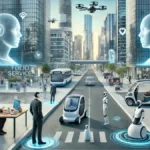US law enforcement officials have long warned against the possibility of foreign terrorists or hostile hackers attacking the national electrical infrastructure.
The clear and present danger recently prompted a Los Alamos National Laboratory quantum cryptography (QC) team to successfully complete the first-ever demonstration of securing control data for electric grids using quantum cryptography.

“Novel methods for controlling the electric grid are needed to accommodate new energy sources such as renewables whose availability can fluctuate on short time scales,” explained Jane Nordholt of the Los Alamos lab.
“This requires transmission of data to and from control centers; but for grid-control use, data must be both trustworthy and delivered without delays. The simultaneous requirements of strong authentication and low latency are difficult to meet with standard cryptographic techniques.”
According to Nordholt, quantum cryptography provides a means of detecting and defeating an adversary who might try to intercept or attack the communications.
Single photons are used to produce secure random numbers between users, and these random numbers are then used to authenticate and encrypt the grid control data and commands. Because the random numbers are produced securely, they act as cryptographic key material for data authentication and encryption algorithms.
At the heart of the quantum-secured communications system is a unique, miniaturized QC transmitter invention, known as a QKarD, that is five orders of magnitude smaller than any current QC device on the market.
“This project shows that quantum cryptography is compatible with electric-grid control communications, providing strong security assurances rooted in the laws of physics, without introducing excessive delays in data delivery,” said Nordholt.
Indeed, a late-2012 demonstration demonstrated that quantum cryptography provides the necessary strong security assurances with latencies (typically 250 microseconds, including 120 microseconds to traverse the 25 kilometers of optical fiber connecting the two nodes) that are at least two orders of magnitude smaller than requirements.
In addition, the team’s quantum-secured communications system proved this very capability could be deployed with only a single optical fiber to carry the quantum, single-photon communications signals; data packets; and commands. Plus, the system is scalable to multiple monitors and several control centers.
“The cyber-physical test bed provides a realistic environment to explore cutting-edge research and prove emerging smart grid technology in a fully customizable environment,” said Tim Yardley, assistant director of test bed services.
“In this demonstration, high-fidelity power simulation was leveraged using the real-time digital simulator to enable hardware in the loop power simulation to drive real phasor measurement units (PMUs), devices, deployed on today’s electric grid that monitor its operation.”
Yardley also noted that the simulator provides a mechanism for proving technology in real-world scenarios.
“We’re not just using perfect or simulated data, so the results demonstrate true feasibility.”
The power simulation was running a well-known power-bus model that was perturbed by introducing faults, which drove the analog inputs on the connected hardware PMU. The PMU subsequently communicated via the standard protocol to the quantum cryptography equipment, which handled the key generation, communication and encryption/decryption of the connection traversing 25 kilometers of fiber. A phasor data concentrator then collected and visualized the data.
It should be noted that the Los Alamos team is seeking funding to develop a next-generation QKarD using integrated electro-photonics methods, which would be even smaller and more highly integrated.





